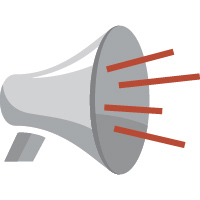Why Does My Heading Air Whistle?

If you’ve ever heard a high-pitched whistling or squealing sound coming from your hearing aid, you’re not alone. This sound, commonly known as feedback, can be frustrating, but it’s also usually fixable. Understanding why your hearing aid whistles and how to stop it can help you enjoy clear, comfortable hearing every day.
What Is Hearing Aid Feedback?
Hearing aid feedback occurs when amplified sound from your device escapes the ear and is picked up again by the hearing aid’s microphone. This creates a loop of sound that results in a high-pitched whistle or squeal. Feedback can happen occasionally or become a persistent issue, depending on the cause.
6 Common Causes of Hearing Aid Whistling
There are several reasons why your hearing aid may start to whistle. Identifying the root cause is the first step toward a solution.
1. Improper Fit or Placement
If your hearing aid or earmold isn’t sitting snugly in your ear, sound can leak out and re-enter the microphone. Even slight movement, like chewing or talking, can disrupt the seal and trigger feedback.
2. Excessive Earwax
A buildup of earwax can reflect sound back into the hearing aid microphone, leading to whistling. Keeping your ears clean and scheduling regular earwax removal can help prevent this issue.
3. Volume Is Too High
Turning up your hearing aid’s volume too much can increase the likelihood of feedback. If you frequently need to increase volume to hear properly, your hearing aid may need adjustment or servicing.
4. Worn or Damaged Parts
Over time, tubing and earmolds can wear out or become damaged. Cracks, loose connections, or hardened tubing can all lead to sound leakage and feedback.
5. Changes in Ear Shape or Size
Weight loss, aging, or changes in ear anatomy can affect how well your hearing aid fits. A once-perfect fit may no longer seal the ear properly, resulting in whistling.
6. Poorly Programmed Devices
If your hearing aids aren’t properly programmed for your specific hearing loss or lifestyle, they may amplify the wrong frequencies or volumes, contributing to feedback problems.
How to Stop Hearing Aid Feedback
There are several simple ways to resolve hearing aid whistling:
- Reposition the device – Make sure your hearing aid is inserted properly and securely.
- Clean your ears and device – Remove any earwax and keep your hearing aids clean.
- Lower the volume – Reduce the volume slightly and see if the whistling stops.
- Check for damage – Inspect tubing, earmolds, and other components for signs of wear.
- Schedule a fitting – A hearing care professional can ensure your hearing aids fit correctly and make any needed adjustments.
Keep Your Hearing Aids Performing at Their Best
Regular checkups and maintenance are key to preventing feedback and getting the most out of your hearing aids. Don’t wait until a minor issue becomes a major frustration.
When to Seek Professional Help
If you’ve tried troubleshooting and your hearing aids are still whistling, it’s time to see a hearing specialist. Ongoing feedback could signal a more serious issue that requires expert attention.
At Vibrant Hearing, our licensed hearing professionals are trained to identify the source of hearing aid feedback and provide effective solutions. Whether you need a simple adjustment, new earmolds, or an upgrade to your current hearing technology, we’re here to help.
Say Goodbye to Whistling with Help from Vibrant Hearing
If your hearing aids are whistling or not working as well as they used to, Vibrant Hearing is here to help. We offer expert hearing aid fittings, cleanings, repairs, and custom programming tailored to your needs. Contact us today to schedule an appointment and enjoy clear, confident hearing once again.

